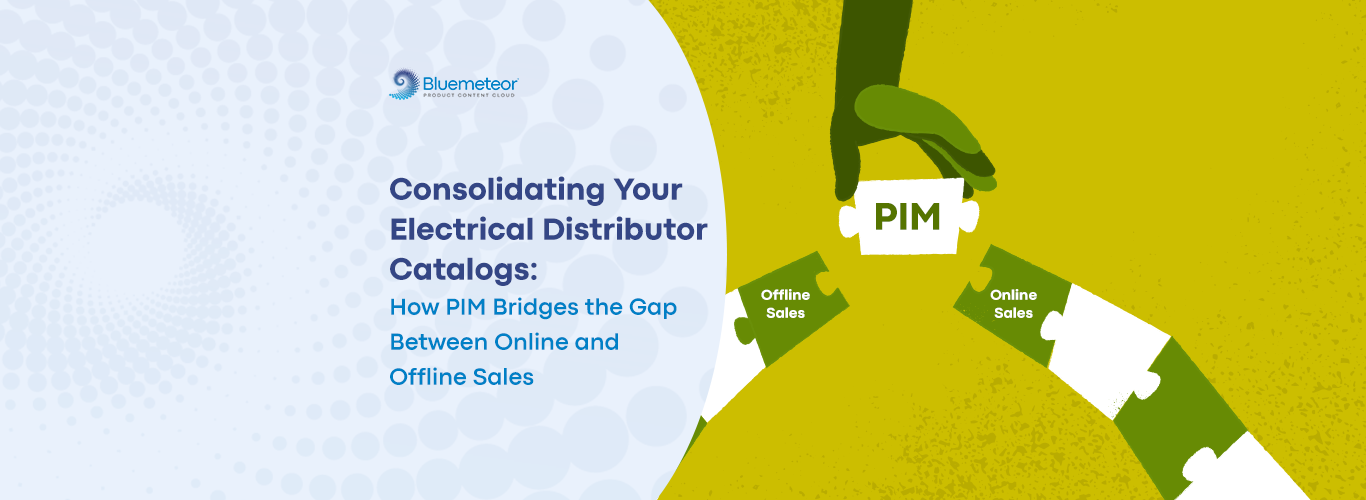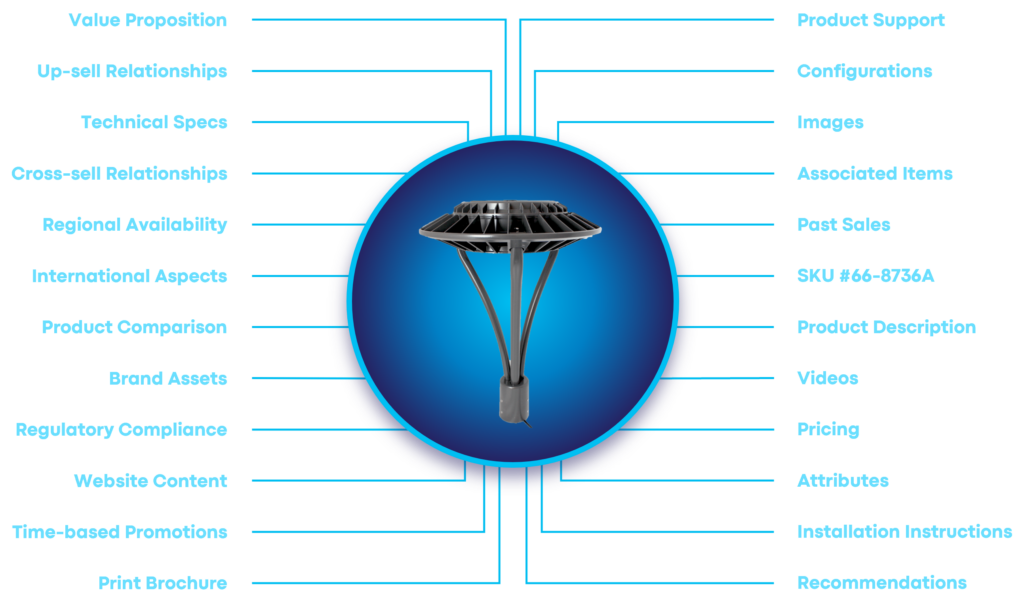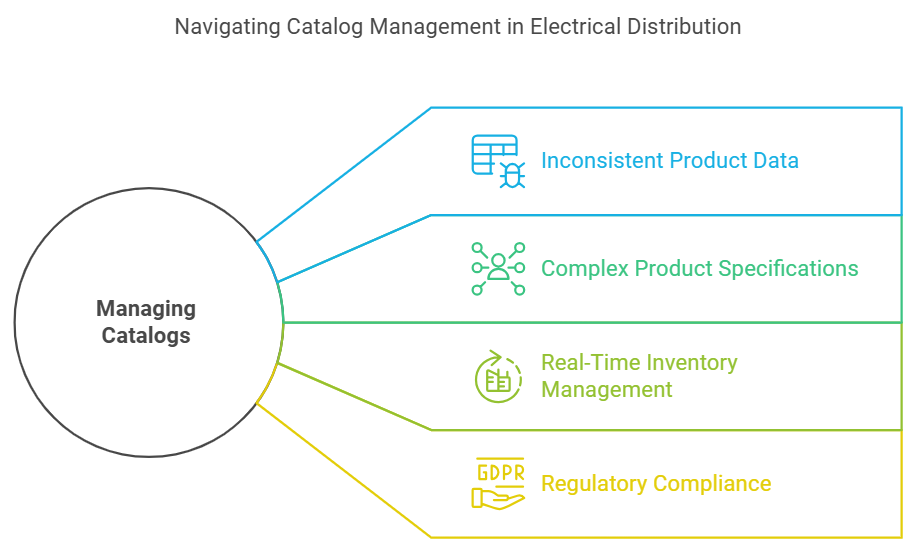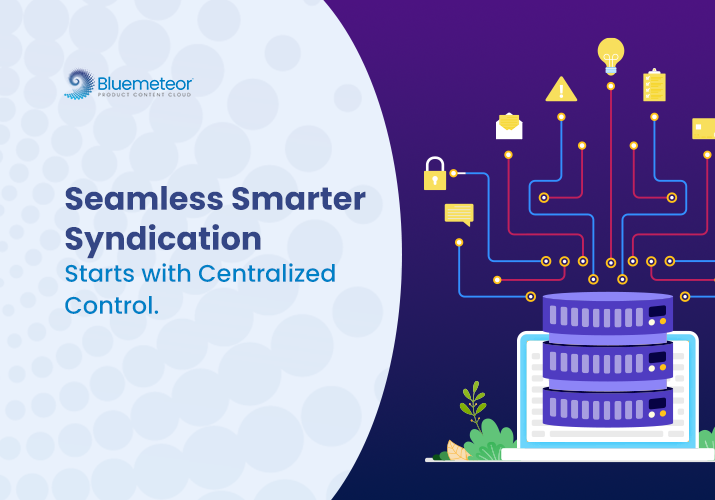Consolidating Your Electrical Distributor Catalogs: How PIM Bridges the Gap Between Online and Offline Sales

The electrical distribution industry faces unique challenges when managing product catalogs, so a robust PIM for electrical distributors is essential for overcoming inefficiencies and improving customer experience. With large inventories filled with complex, specification-heavy products, ensuring consistency and accuracy across multiple sales channels can be a daunting task.
Distributors often struggle to keep their product data up to date, organized, and aligned across various platforms, resulting in inefficiencies, errors, and a less-than-ideal customer experience.
This blog explores how implementing a Product Information Management (PIM) system can address these challenges, streamline catalog management, and ultimately improve the customer experience.
The Growing Complexity of Product Catalogs in the Electrical Distribution Industry
Electrical distributors typically deal with a vast array of products, from simple cables to highly specialized components like circuit breakers, transformers, and lighting fixtures. These products come with an abundance of specifications—voltage, amperage, material composition, certifications, and more—which must be accurately managed.
Furthermore, distributors are expected to provide clear, consistent, and up-to-date product information across multiple sales channels, including e-commerce platforms, trade portals, printed catalogs, and in-person sales teams.
Without a proper system in place, catalog management becomes time-consuming and prone to errors. Inconsistent or outdated information can frustrate customers, resulting in poor experiences, misorders, and lost sales.
To effectively compete in today’s fast-paced, omni-channel environment, electrical distributors must adopt a system that can handle the complexity of product data and ensure consistency across all touchpoints.
What is a PIM System and Why Does it Matter for Electrical Distributors?
A PIM for electrical distributors is crucial to centralizing product data and eliminating risks of discrepancies. A Product Information Management (PIM) system is a software solution designed to centralize and streamline the management of product information. PIM systems help businesses store, manage, and distribute product data across various sales channels, ensuring accuracy, consistency, and accessibility.
For electrical distributors, a PIM system can serve as a single source of truth for product information, eliminating the risk of discrepancies across different channels.
By implementing a PIM, electrical distributors can:
- Centralize Product Data: Store all product-related information in a single platform, ensuring everyone in the organization is working with the same, up-to-date information.
- Standardize Product Descriptions: Create consistent and standardized product descriptions, specifications, and attributes to maintain uniformity across all catalogs and sales platforms.
- Enhance Data Accuracy: Reduce human error and manual data entry, improving the accuracy of product information.
- Improve Time-to-Market: Quickly update product information across all sales channels, reducing the time it takes to launch new products or promotions.
Product Data

Key Challenges Faced by Electrical Distributors Without a PIM System
Before implementing a PIM system, electrical distributors often face several catalog management challenges, including:
- Data Silos: Product data may be spread across multiple systems, such as spreadsheets, ERP systems, and supplier databases, making it difficult to get a unified view of the catalog.
- Inconsistent Product Information: Different teams may use varying formats and standards for product descriptions, which can lead to confusion when customers access the catalog across different channels.
- Inefficiencies in Updating Product Data: Manual processes for updating product information are time-consuming and prone to errors. Changes made in one system may not automatically propagate across all channels.
- Limited Integration with Sales Channels: Electrical distributors often struggle with syncing product data between their ERP, e-commerce platform, and physical catalogs, creating discrepancies that impact the customer journey.
These challenges can be overwhelming, but they can be mitigated with the adoption of a robust PIM system.

How PIM Makes the Online-Offline Catalogs More Efficient
| Functionality | How PIM Bridges the Gap | Result for Distributors |
|---|---|---|
| Centralized Data | PIM centralizes product data, ensuring consistency across channels. | Uniform product information across online and offline sales. |
| Real-Time Sync | PIM integrates with inventory systems to reflect stock levels across all channels instantly. | Prevents inventory mismatches and backorders. |
| Localized Data | PIM stores region-specific product specifications, certifications, and pricing. | Ensures compliance with regional regulations and creates personalized customer experiences. |
| Automated Updates | PIM automates product updates across multiple channels. | Saves time and ensures consistency in data management. |
| Mobile Access | PIM allows sales teams to access product data on-the-go. | Sales teams are always equipped with accurate, up-to-date information. |
| Dynamic Pricing | PIM enables real-time pricing adjustments across channels. | Keeps pricing consistent and adaptable to market conditions. |
What’s the Best PIM for Electrical Industry
Choosing the right PIM system is one of the most critical decisions for electrical distributors. With product catalogs containing thousands of items, each with technical specifications and certifications, the system must be both robust and flexible. Not all PIM platforms can handle the unique complexities of the electrical industry.
When businesses ask, “What’s the best PIM for electrical industry?”, the answer lies in finding a platform that centralizes data, streamlines catalog updates, and integrates seamlessly with existing systems like ERP and eCommerce. It must also support compliance requirements and regional product variations.
Bluemeteor Product Content Cloud stands out as a specialized solution for electrical distributors. Unlike generic PIM platforms, it is designed to handle highly detailed, specification-heavy product data while ensuring accuracy across both online and offline sales channels.
The platform empowers distributors with advanced features such as automated updates, dynamic pricing, and supplier integrations. These capabilities reduce manual work, eliminate data silos, and deliver a seamless customer experience.So, if you are considering what’s the best PIM for electrical industry, Bluemeteor provides the answer. It ensures consistency, compliance, and efficiency, making it the ideal partner for electrical distributors looking to modernize catalog management.
Roadmap for Electrical Distributors to Implement a PIM System
Implementing a PIM for electrical distributors can transform catalog management practices. Here’s a simple, yet logical roadmap to help assess current practices, identify pain points, and begin the journey toward PIM implementation.
1. Assess Current Catalog Management Practices
Action: Start by evaluating the existing catalog management process.
- Current State Evaluation: Review your existing system for managing product data, including catalog accuracy, data quality, and the integration between online and offline channels. Assess how current practices impact inventory, pricing, supplier data, and customer satisfaction.
- Identify Pain Points: Common issues for electrical distributors include inaccurate product specs, manual data entry errors, delayed updates, and lack of integration between online and offline sales channels.
Key Considerations:
- Are product details inconsistent across platforms (e.g., online, offline, mobile apps)?
- How much time is spent manually updating product information or dealing with discrepancies?
- Are you able to keep up with the regulatory and certification requirements of electrical products?
2. Choose the Right PIM Software
Action: Select a PIM solution that meets your unique needs as an electrical distributor.
- Software Selection: Choose a PIM for electrical distributors that integrates well with your existing systems (ERP, CRM, eCommerce) and handles the complexities of electrical product data (e.g., technical specs, certifications, pricing).
- Customization Needs: Ensure the PIM system supports customization for your product categories, supplier data, and regional pricing or certifications, as these are critical for electrical distributors.
Key Considerations:
- Does the PIM offer flexible data modeling for complex electrical products (e.g., cables, connectors, switches)?
- Can the system scale as your product catalog grows?
- Does it offer integration with your existing software and sales channels?
3. Set Data Governance Standards
Action: Establish rules for how product data is created, stored, and updated.
- Data Quality: Define clear guidelines for data quality, including consistency, accuracy, and completeness of product specifications, certifications, and pricing.
- Compliance: Ensure the PIM system supports regulatory compliance, such as managing certifications (UL, CE) and ensuring data is accurate and region-specific.
Key Considerations:
- Who will be responsible for product data ingestion, and how will data accuracy be verified?
- What are the workflows for updating product data? How will you ensure consistency across all channels?
- Are there regional differences in product information that need to be addressed?
4. Plan for Integration with Suppliers and Sales Channels
Action: Develop a strategy for integrating supplier data and syncing it across all sales channels.
- Supplier Integration: Choose a PIM for electrical distributors that supports easy integration with suppliers’ product data feeds. This will automate data imports, ensuring timely updates and consistency.
- Sales Channel Syncing: Ensure that the PIM system automatically updates product information across both online and offline channels to prevent discrepancies.
Key Considerations:
- Can the PIM handle large volumes of supplier data and automatically update the catalog with new product details?
- Does the PIM allow for easy management of regional pricing and certifications across multiple channels?
5. Train Teams for Successful Adoption
Action: Provide training to ensure smooth adoption and use of the PIM system.
- Team Involvement: Involve key stakeholders (marketing, sales, IT, and catalog management teams) early in the PIM implementation process to ensure everyone understands how the system benefits their role.
- Training & Support: Organize hands-on training sessions to familiarize teams with the PIM’s features, data governance practices, and how to manage catalog updates.
Key Considerations:
- How will team members interact with the PIM (e.g., data entry, catalog updates)?
- What ongoing support will be available for troubleshooting and best practices?
6. Roll Out the PIM System
Action: Begin the rollout of the PIM system in phases.
- Phase 1: Start with a limited set of product categories or regions to test the PIM system’s functionality and integration.
- Phase 2: Gradually expand to include more product categories and integrate supplier data and pricing.
- Phase 3: Full-scale implementation across all channels, ensuring that product data is synchronized and compliant.
Key Considerations:
- What is the timeline for full implementation?
- How will you measure success (e.g., reduced data errors, faster catalog updates, improved inventory sync)?
Conclusion: The Future of Catalog Management for Electrical Distributors
As electrical distributors continue to expand their product offerings and embrace digital channels, adopting a PIM system is no longer a luxury—it’s a necessity. A PIM system allows distributors to efficiently manage their complex product catalogs efficiently, ensuring accuracy and consistency across all channels, while enhancing the overall customer experience.
Bluemeteor Product Content Cloud offers a powerful solution for electrical distributors to streamline catalog management and enhance the customer experience.
Get in touch today for a personalized demo and see how we can transform your product data management




